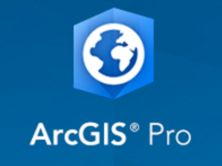Esri continues to work and improve on its newest desktop GIS application, ArcGIS Pro. For those that may not be aware of ArcGIS Pro, it is a completely new 64-bit desktop GIS application that makes use of a modern ribbon based interface. Being 64 bit, it can take full advantage of current computer hardware. This means it can use as much RAM and processor power as you can throw at it, which means it is faster than ArcMap, ArcCatalog, ArcScene and ArcGlobe.
ArcGIS Pro will eventually replace our love beloved ArcMap and ArcCatalog (Esri is now even admitting to that). While I am not sure if an official timeline has been released for that, my personal best guess is in 2 to 4 years. ArcGIS Pro is still very much a work in progress. However, Esri is focusing a lot of effort to get ArcGIS Pro up to speed. They recently released version 1.3 which has many key improvements. So what are some of the major enhancement Esri has made to ArcGIS Pro 1.3?
Key Improvements to ArcGIS Pro 1.3
- Greater support for KML – You can add KML layers to your maps and scenes. KMLs can be labeled and displayed in 3D within a 3D Map.
- Geodatabase & Map Topology – Esri has finally added support for Geodatabase & Map Topologies. This is a major step in making ArcGIS Pro capable of being a primary desktop GIS Application. You can validate topology, fix errors and use topology edit tools.
- Locate Pane – The locate pane is similar to the Find tool in ArcMap. You can now use this to search for features using locally hosted data as well as remotely hosted or web data
- Improved Symbology support – ArcGIS Pro 1.3 now supports proportional symbology. You can also configure a layer to show different symbology at different scales. 3D Procedural symbology is now supported for points.
- Charts – Charts are now supported in ArcGIS Pro. You can create bar, histogram, Scatter Plot and Line Charts in ArcGIS Pro 1.3. These can be added to layouts.
- New Raster capability – Several new tools have been added for increased raster capability. You can now generate a raster from a raster function. You can also create a mobile mosaic dataset from a traditional mosaic dataset. Esri has also added an Image Classification Wizard which makes use of image classification best methods to help you more easily classify rasters.
- Python – ArcGIS Pro 1.3 can now use conda for packaging Python libraries. This allows support of python under multiple Python environments. You no longer need to install a separate Python install to get the full python capability with ArcGIS Pro 1.3 as you did with past versions. Python toolboxes can now be encrypted and decrypted as well.
As you can see ArcGIS Pro is a big step forward. Esri has added many key improvements to continue down the road of making ArcGIS Pro ready for full time use. For a complete list of what’s new in ArcGIS Pro 1.3 please go to https://pro.arcgis.com/en/pro-app/get-started/whats-new-in-arcgis-pro-1-3.htm.
Some things still not supported in ArcGIS Pro
Even though ArcGIS Pro 1.3 represents a big step forward, it is still very much a work in progress. For those of us that went through the transition to ArcGIS with 8.0 to 8.3, I would say that ArcGIS Pro 1.3 is about the equivalent to ArcGIS Desktop 8.2. It is very close but still lacking for it to be ready to replace ArcMap and ArcCatalog.
So what are some key things that are not supported in ArcGIS Pro 1.3
- Parcel Fabric
- Cartographic Representations
- CAD to Geodatabase conversion tool as well as Import CAD annotation
- Geometric Networks
- Creating a Topology – ArcGIS Pro can now work with already created geodatabase topologies but cannot create them
You can find a complete list of tools not currently supported in ArcGIS Pro 1.3 at –https://pro.arcgis.com/en/pro-app/tool-reference/appendices/unavailable-tools.htm
If you have not taken time to look at ArcGIS Pro, I would strongly encourage you to begin. Esri is focusing most of its desktop development effort on this new product. As I mentioned earlier, it will eventually replace the ArcMap and ArcCatalog we have become so comfortable with.

